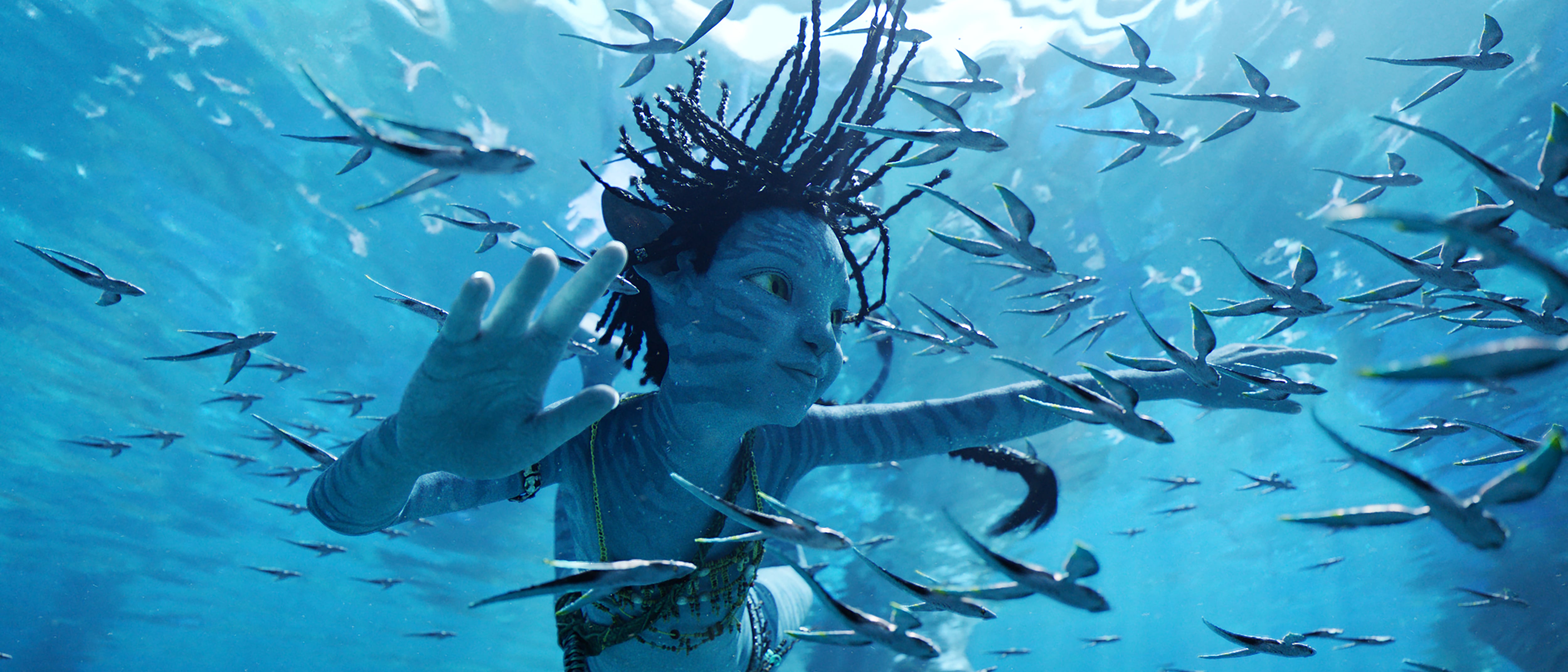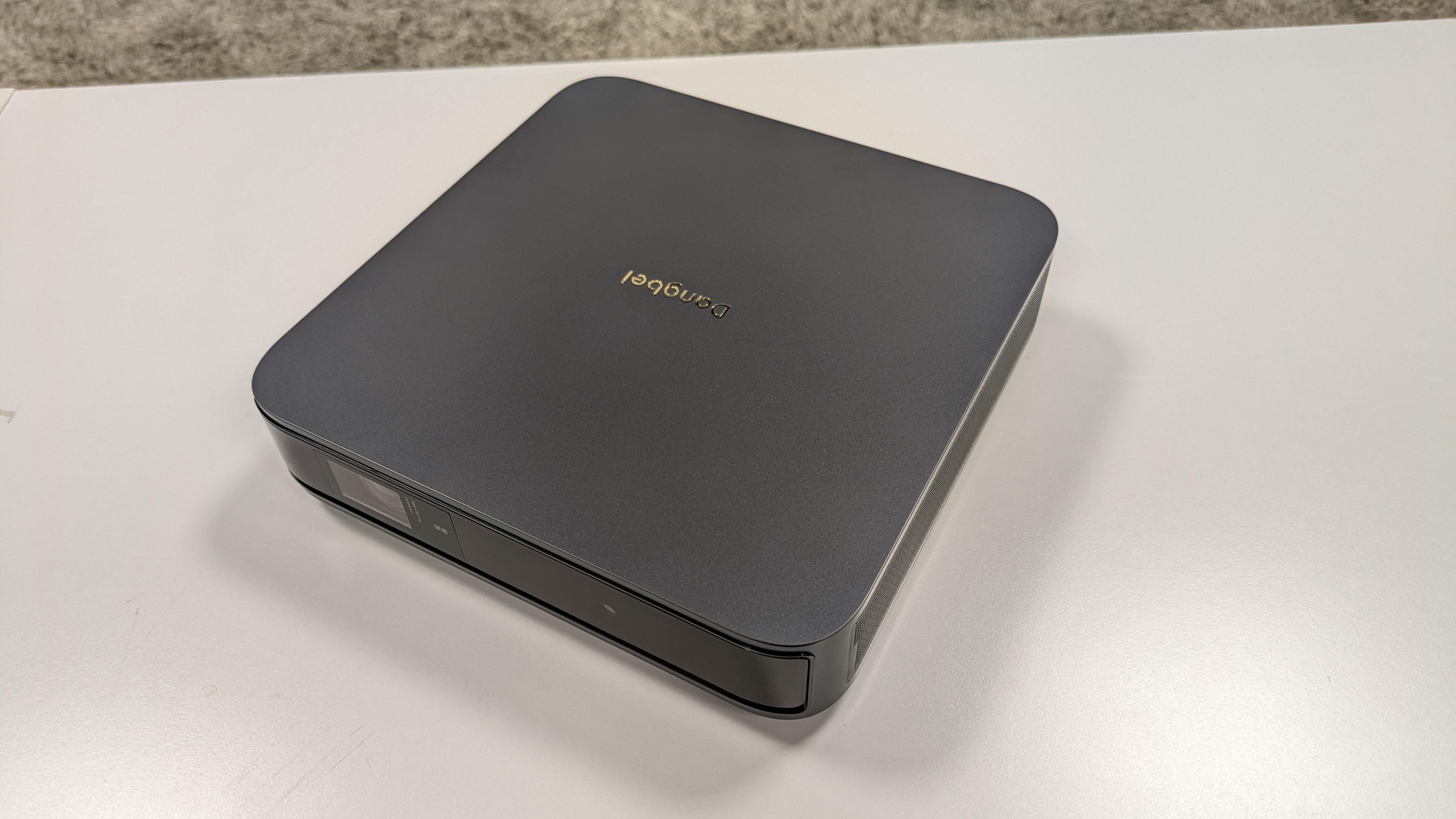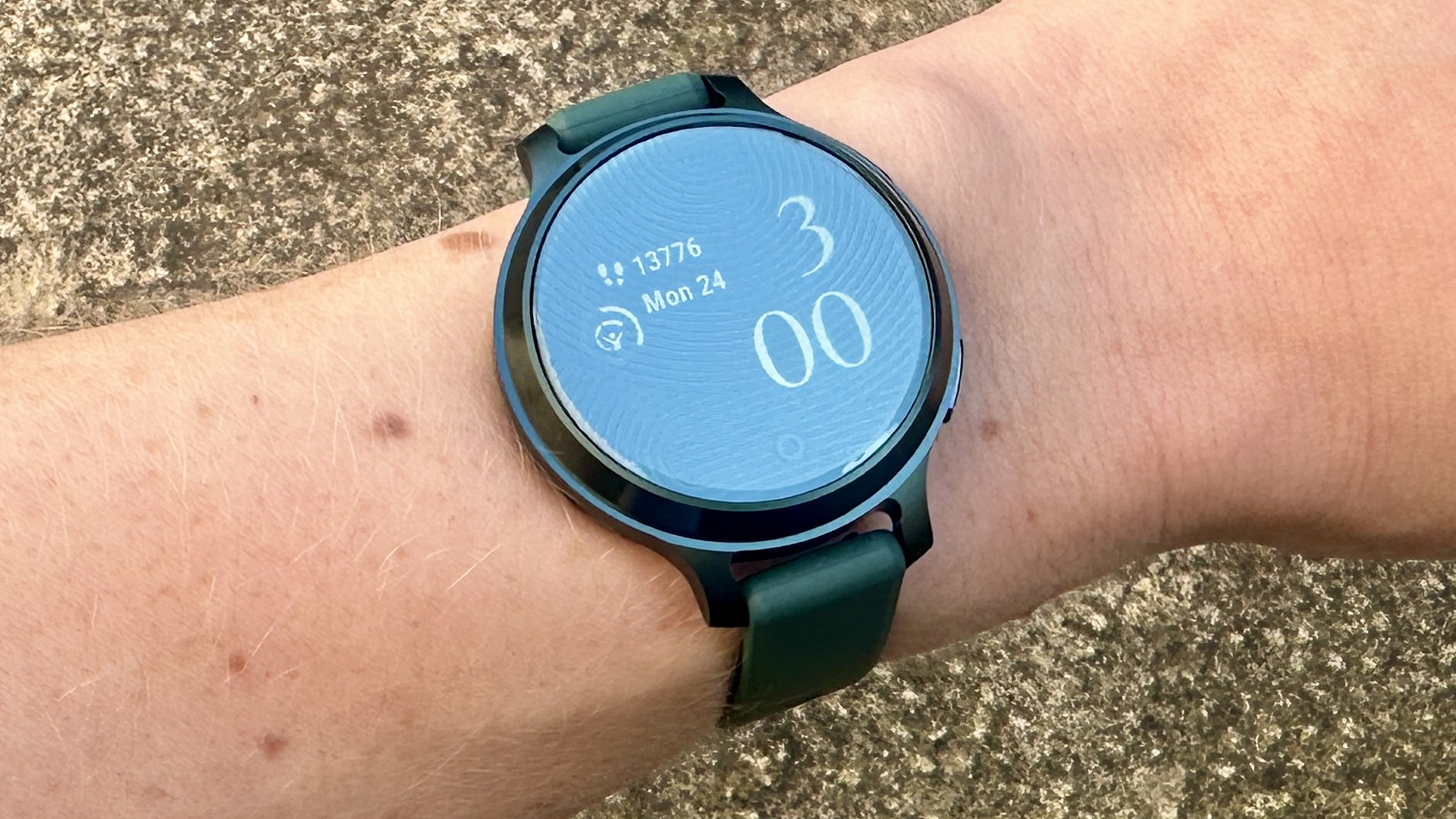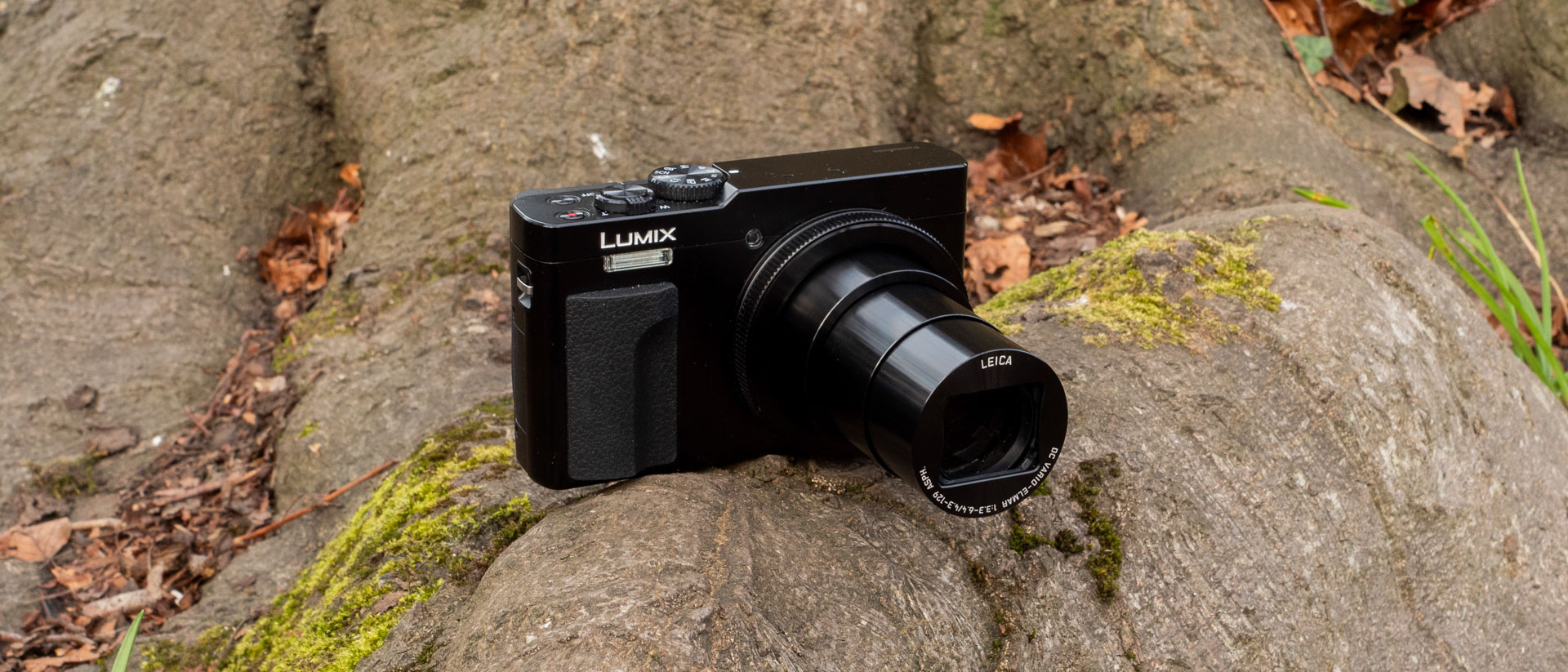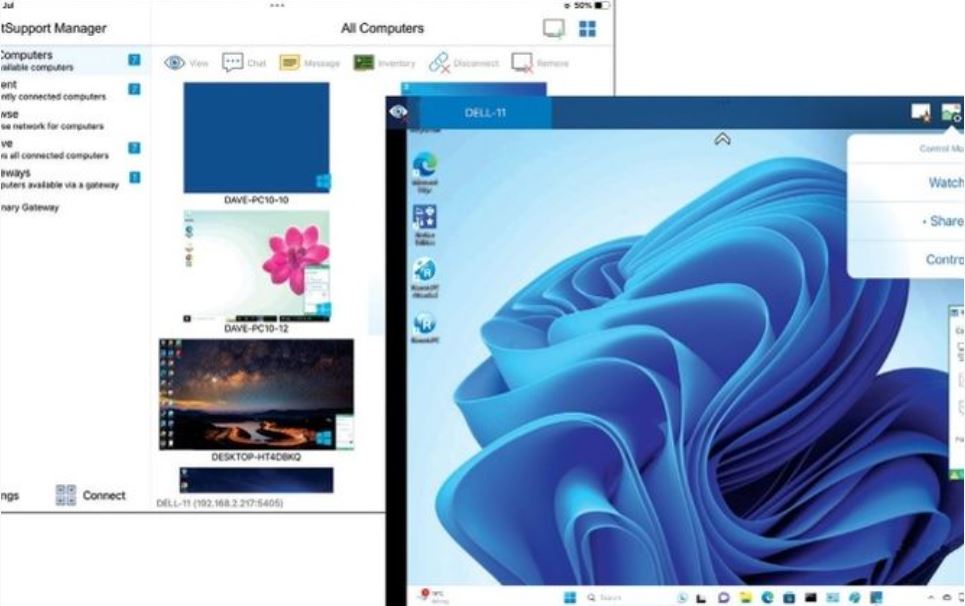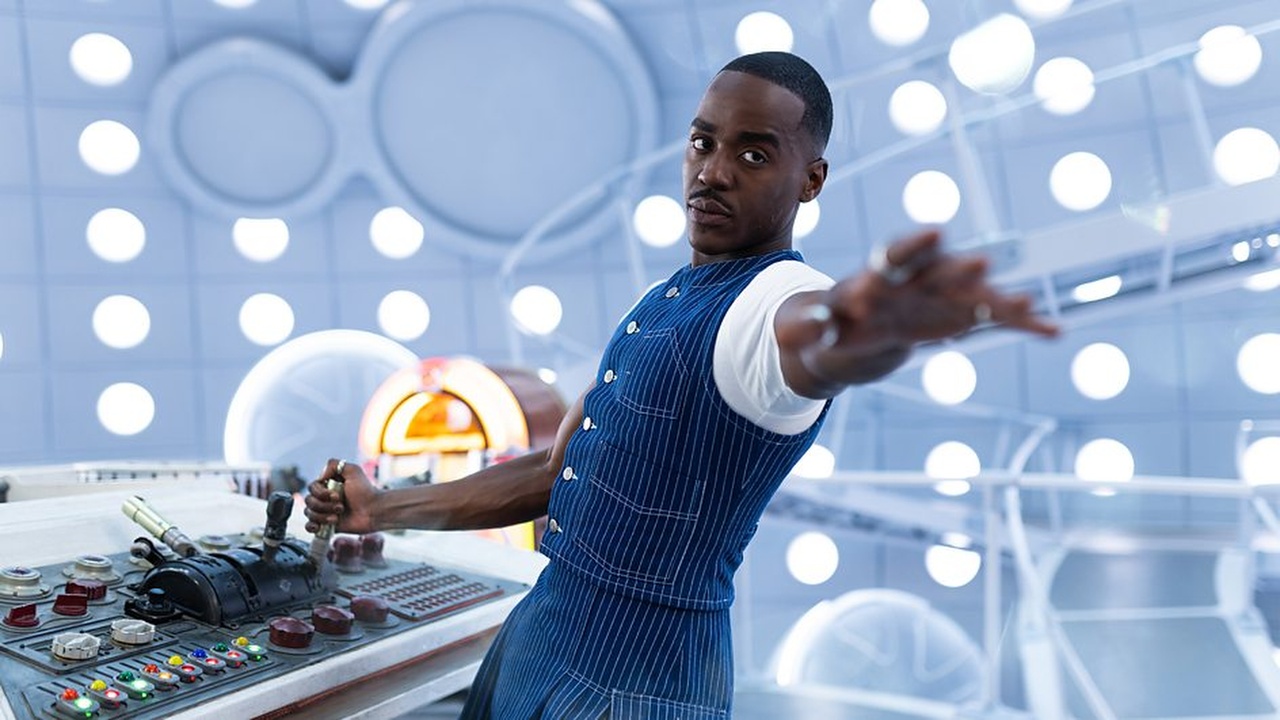TechRadar Verdict
Avatar: The Way of Water is a phenomenal feat of filmmaking. Not only does director James Cameron deliver on the promise of truly jaw-dropping visual effects, he also gives a beating heart to a story that, somehow, manages to make us care deeply for a family of blue aliens whose species and customs we haven’t encountered for over a decade. This long-awaited return to Pandora is every bit as beautiful as its aquatic title suggests – at times unbelievably so – and although some may take issue with the film’s whale-sized runtime, most will walk away from The Way of Water feeling stung by the disappointment of having to leave Cameron's mesmerizing world at the multiplex door.
Pros
- +
Bar-raising performance capture
- +
Surprisingly moving story
- +
Simon Franglen’s sweeping score
Cons
- -
Third act feels familiar
- -
Lengthy runtime may frustrate some
Why you can trust TechRadar
They say absence makes the heart grow fonder, but the 13-year gap between James Cameron’s Avatar and its sequel, The Way of Water, has understandably left many cinemagoers at best indifferent and at worst uninterested in a return to the lush green jungles of Pandora.
2009’s introduction to the Naʼvi and their homeworld is seared into our collective consciousness for the novelty of its 3D format and, of course, its record-breaking box office success – the film’s global receipts now total a ridiculous $2.9 billion – but less has been said in the years since about Avatar’s unrivalled ability to immerse and entertain (Quentin Tarantino famously described the experience of watching the movie as “a ride”).
No other filmmaker can draw the viewer into an on-screen adventure quite like Cameron, and no other film since Avatar has come close to delivering the sort of sustained awe that the world of Pandora elicits around every corner – until now.
Welcome (back) to the jungle
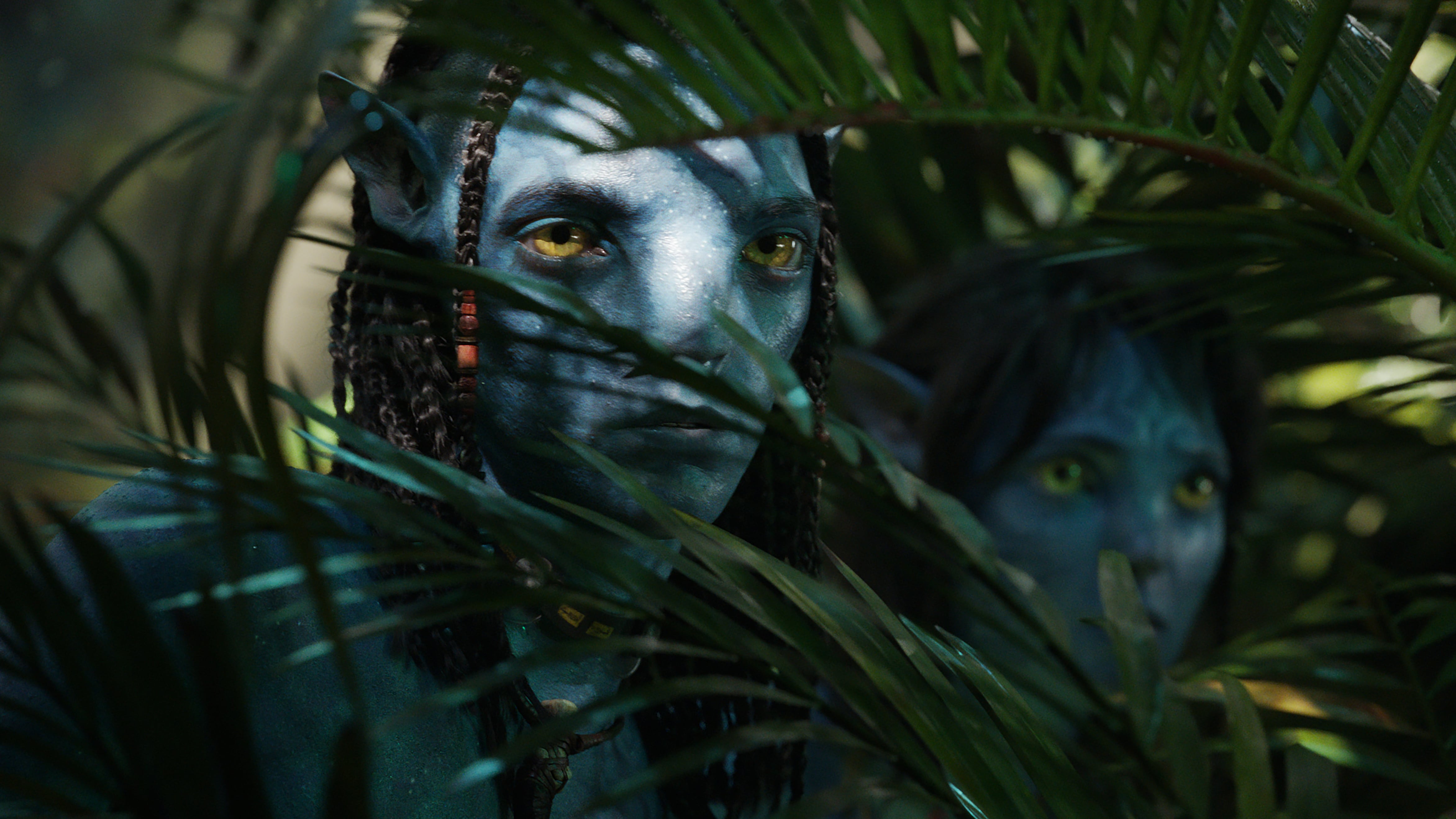
Cameron has explained away the decade-long wait for his Avatar sequel by saying it was necessary to develop new technology for shooting its underwater sequences (more on these later), but he may as well claim that the delay was a deliberate creative decision to age his Na’vi heroes in real time.
Set some 15 years after its predecessor, The Way of Water finds Jake Sully (Sam Worthington) and Neytiri (Zoe Saldaña) living a life of forest-dwelling quietude on Pandora. They now have four children – three of their own and an adopted daughter by Grace (Sigourney Weaver), whose pregnancy, we’re told, was a mystery until her after death in Avatar – and the pair serve as leaders of the Omaticaya, the Na’vi clan central to Cameron’s original story.
Also part of the Sully clan is Spider (Jack Champion), a human boy who lives among the Na’vi because he was too young to be shipped back to Earth following the departure of the ‘sky people’ a decade earlier (he’s described in the film’s opening moments as a “stray cat”, which says something of the underlying hostility the Na’vi still hold toward non-natives).
Plenty more new faces are introduced throughout The Way of Water’s three-hour runtime, and given that almost all of them belong the Na’vi, Cameron is quick to point out that most of the film’s dialogue is spoken in the Naʼvi language, despite sounding English to our ears (Jake’s scene-setting monologue includes a smart explanation as to why that is).
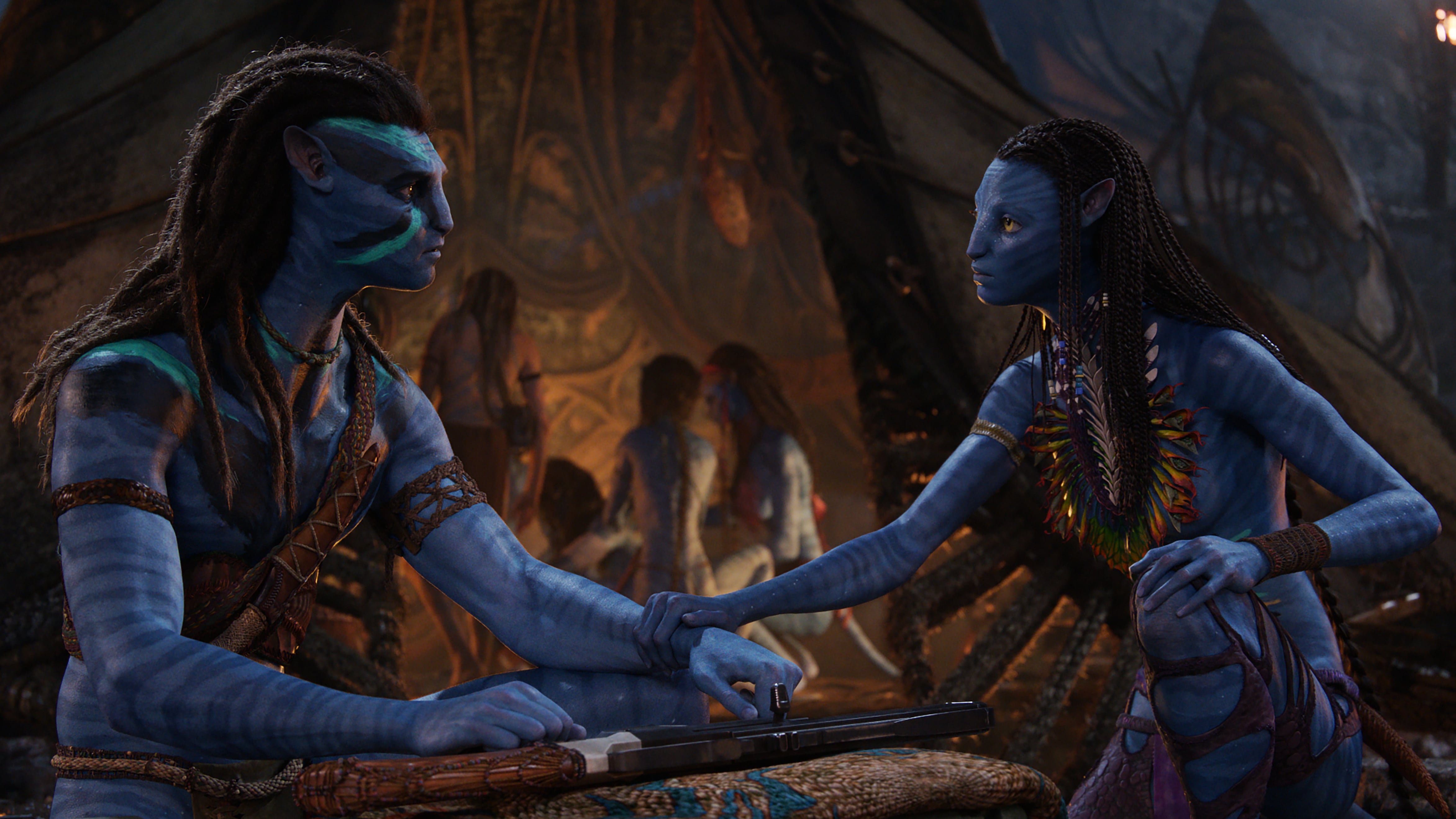
It’s impressive how light-touch this exposition feels considering the gap between visits to Pandora. Cameron bets on our immediate familiarity with the Naʼvi, the Omaticaya, Pandora, and its wildlife by throwing us straight back into the jungle with only a few brief moments of memory-jogging, and it doesn’t take long before The Way of Water has us strapped in and ready to fly alongside the mountain banshees for a new adventure.
The film’s dramatic location change comes by way of a familiar threat. Without wishing to stray too far into spoiler territory, the ‘sky people’ return to Pandora with a mission to make its biosphere hospitable for humans. Earth has (surprise!) been ravaged by centuries of neglect, so mining is out and colonization is in – and certain members of the human race also happen to have a real grudge against marine-turned-Na’vi-native Jake Sully.
Long story short: the Sully clan are forced to seek safety in the faraway regions of Pandora. They settle on a crop of Caribbean-esque islands that are home to the Metkayina, or reef people, and are permitted to take shelter among their aquatic hosts on the condition that they learn – you guessed it – the way of water. Cue the bioluminescent whales!
Fathers and sons
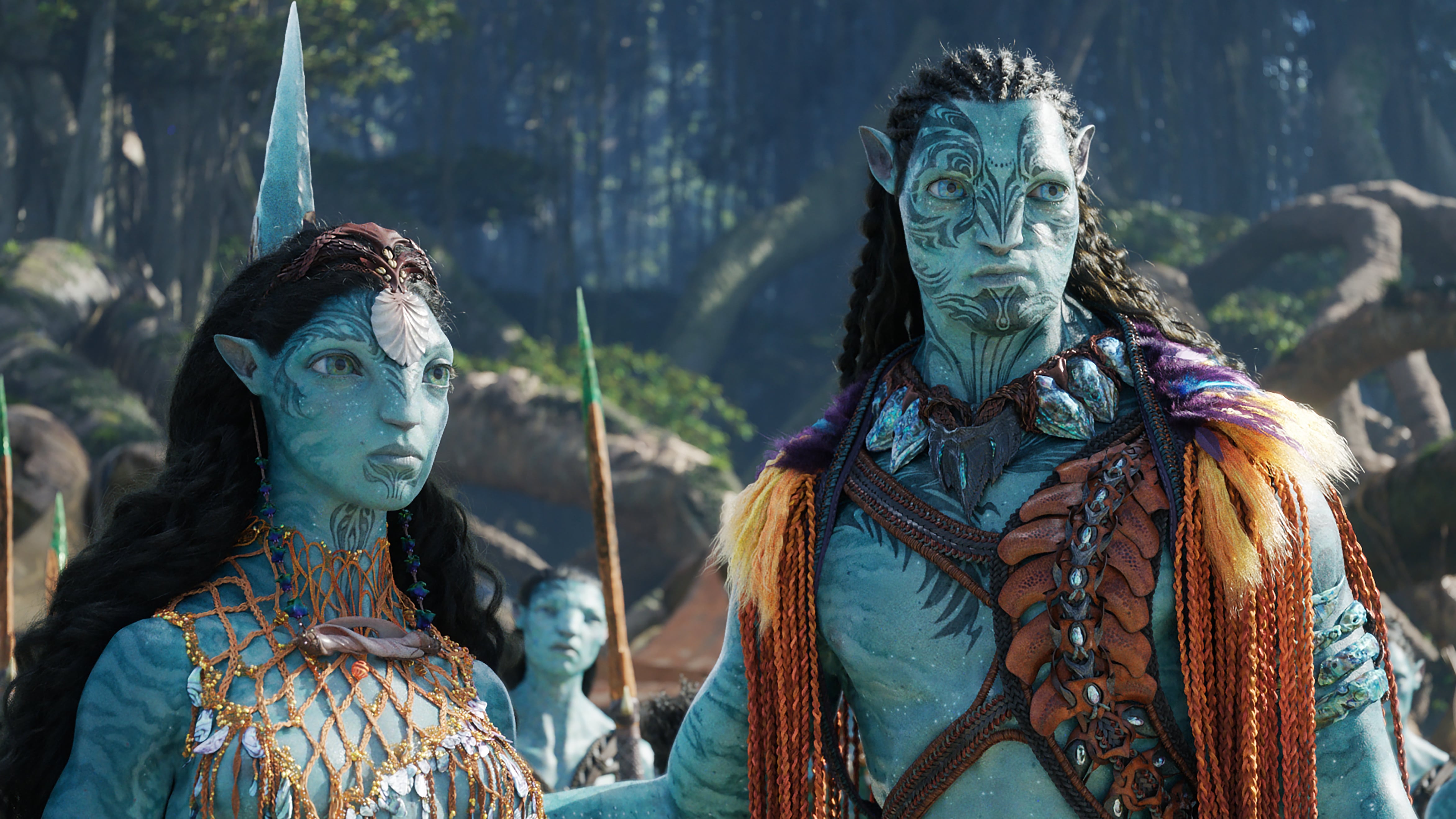
Of course, a whole lot more happens in The Way of Water once Jake, Neytiri and their blue brood encounter these same-but-slightly-different Na’vi neighbors – in truth, our synopsis only retells the events of the film’s opening hour– but Cameron’s follow-up story is best experienced as blind as possible.
Just know this: the introduction of children in The Way of Water makes for an infinitely more emotionally engaging ride than the first Avatar. Cameron knows exactly what he’s doing by throwing naive Na’vi youngsters into the fray – they’re the bait that wholeheartedly involves us in the film’s otherwise-familiar humans-are-the-bad-guys story. In the 13 years since Worthington and Saldaña played Jake and Neytiri for the first time, both actors have started families of their own, and the immense – at times crushing – responsibility of parenthood is felt in every frame of The Way of Water. “You’re fearless when you don’t have kids. But you learn fear when you do – you have something to lose”, Cameron said in the film’s press conference, and that sentiment fuels the movie’s plot right through to its downright stirring conclusion.
So, yes: The Way of Water may well make you cry about a bunch of blue aliens. But the all-too-familiar relationships between parents and children aren’t the only parts of Cameron’s sequel that risk inducing tears.
Ocean eyes
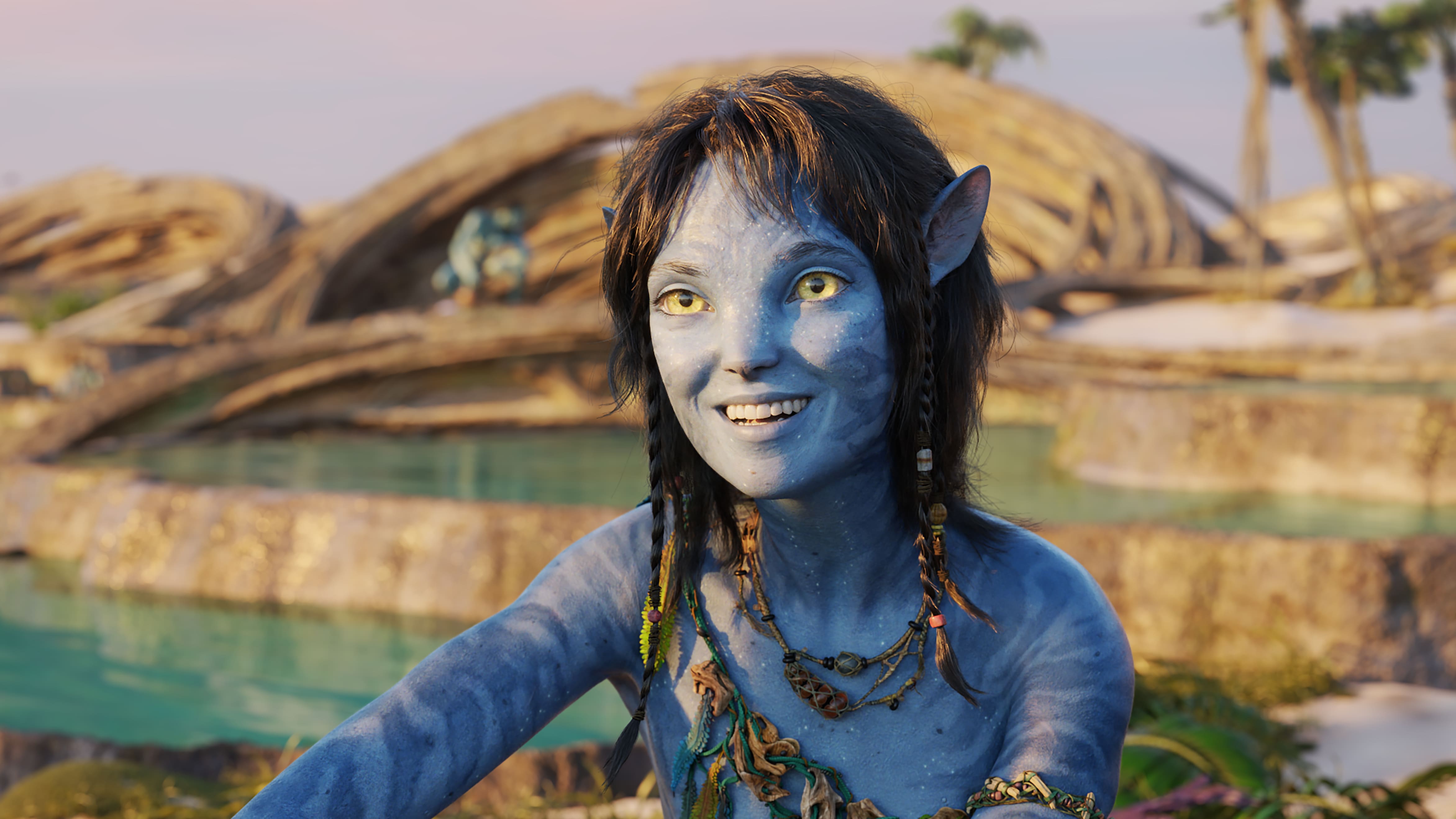
On a technical level, it’s hard to think of a more visually arresting motion picture than The Way of Water. This is a cinematic experience in the purest sense – one whose stills are often just as powerful as its motion-heavy sequences – and once the Sully clan touch down on the shores of the Metkayina, it becomes abundantly clear that Cameron’s spiel about waiting for the right technology was no spiel at all.
Where the original Avatar broke new ground with innovative performance-capture techniques, The Way of Water takes the same trickery underwater to blend action and expression in ways never before seen on screen. Seriously, the visual wizardry on display here from New Zealand-based animation studio Wētā FX – the production company founded by The Lord of the Rings director Peter Jackson – is nothing short of remarkable. If you’re able to see The Way of Water in IMAX 3D, absolutely do so. The interaction between water and light is frequently jaw-dropping; sea creatures zip across the screen with power and grace, sand dampens when touched by waves, and surface ripples distort images as they do in real life. In one scene, Sully’s second-oldest son, Lo’ak, encounters a supposedly fearsome whale, and the next 10 minutes are almost spiritually beautiful to behold.
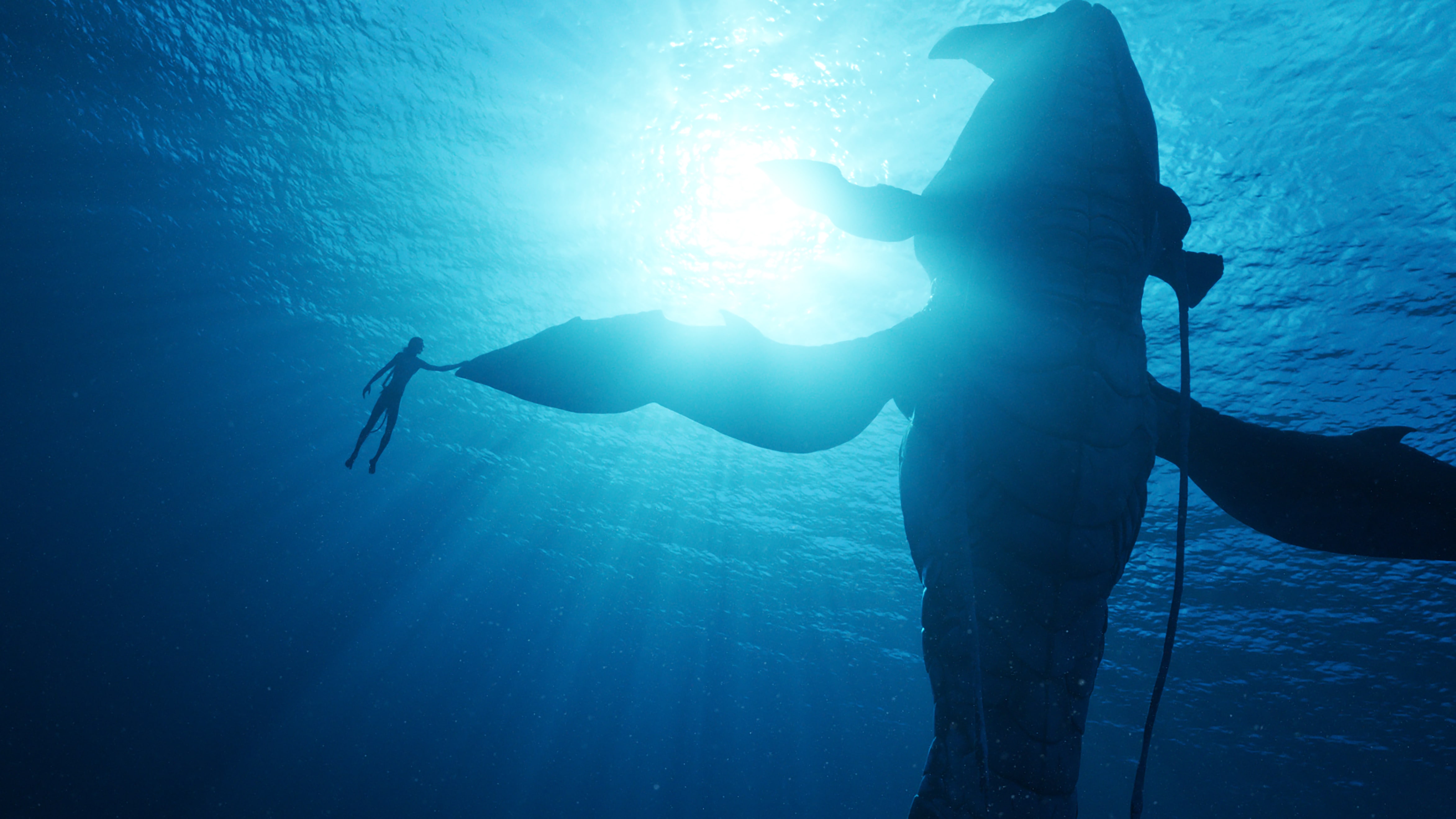
The Na’vi, too, never look less than utterly convincing. Even when characters aren’t speaking to one another through verbal dialogue, there's a perceptible nuance in the eyes and facial expressions of the actors behind them. Pupils contract, muscles twitch and hair – my gosh, the hair! – dances in the water like the tentacles of a solitary sea anemone. Not everything works to perfection. In a movie as heavily reliant on CGI as this, the occasional dodgy texture stands out like a big blue Na’vi thumb, and some vehicle animations come off as a little too video game-like. But for the most part, it is honestly hard to distinguish between the practical and the computer-generated in The Way of Water. Cameron’s enthusiasm for this new form of motion capture technology is absolutely vindicated.
A huge amount of praise must also go to the film’s composer, Simon Franglen, who took on the responsibility of scoring The Way of Water solo after the passing of original Avatar maestro (and frequent Cameron collaborator) James Horner in 2016. Michael Giacchino (The Batman) and Ludwig Göransson (Black Panther: Wakanda Forever) have a fight on their hands for next year's Best Original Score Oscar.
Our verdict

Despite its many triumphs, The Way of Water is not a flawless movie. Saldaña’s Neytiri gets disappointingly little screen time until her shoot-the-pilot-in-the-cockpit skills are needed, and the film’s third act – which is more action packed than a Michael Bay-directed car chase – feels a touch too familiar.
But once you’ve seen a teenage alien visibly blush at the sight of a new love interest, or a superpowered eel perform a somersault against the backdrop of a Pandora sunset, or an extraterrestrial jellyfish field illuminate a deep sea canyon, it becomes difficult to care about earthly filmmaking gripes that might otherwise bring the experience of watching The Way of Water down. Cameron has here crafted a hypnotic aquarium of a movie – an all-encompassing journey to another world that can only be described in hyperbolic terms.
As the follow-up to one of the most groundbreaking films of recent decades, The Way of Water was never going to deliver anything close to the same cultural sucker punch as 2009’s inaugural journey to Pandora – but it does a damn good job of reminding us all why movies exist in the first place.
Avatar: The Way of Water releases exclusively in theaters on December 16.

Axel is TechRadar's UK-based Phones Editor, reporting on everything from the latest Apple developments to newest AI breakthroughs as part of the site's Mobile Computing vertical. Having previously written for publications including Esquire and FourFourTwo, Axel is well-versed in the applications of technology beyond the desktop, and his coverage extends from general reporting and analysis to in-depth interviews and opinion. Axel studied for a degree in English Literature at the University of Warwick before joining TechRadar in 2020, where he then earned an NCTJ qualification as part of the company’s inaugural digital training scheme.
